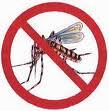What is dengue fever?
 Dengue fever is a disease caused by a family of viruses that are transmitted by mosquitoes. It is an acute illness of sudden onset that usually follows a benign course with symptoms such as headache, fever, exhaustion, severe muscle and joint pain, swollen glands (lymphadenopathy), and rash. The presence (the "dengue triad") of fever, rash, and headache (and other pains) is particularly characteristic of dengue. Other signs of dengue fever include bleeding gums, severe pain behind the eyes, and red palms and soles.
Dengue fever is a disease caused by a family of viruses that are transmitted by mosquitoes. It is an acute illness of sudden onset that usually follows a benign course with symptoms such as headache, fever, exhaustion, severe muscle and joint pain, swollen glands (lymphadenopathy), and rash. The presence (the "dengue triad") of fever, rash, and headache (and other pains) is particularly characteristic of dengue. Other signs of dengue fever include bleeding gums, severe pain behind the eyes, and red palms and soles.
Dengue (pronounced DENG-gay) strikes people with low levels of immunity. Because it is caused by one of four serotypes of virus, it is possible to get dengue fever multiple times. However, an attack of dengue produces immunity for a lifetime to that particular serotype to which the patient was exposed.
Dengue goes by other names, including "breakbone" or "dandy fever." Victims of dengue often have contortions due to the intense joint and muscle pain, hence the name breakbone fever. Slaves in the West Indies who contracted dengue were said to have dandy fever because of their postures and gait.
Dengue hemorrhagic fever is a more severe form of the viral illness. Manifestations include headache, fever, rash, and evidence of hemorrhage in the body. Petechiae (small red or purple blisters under the skin), bleeding in the nose or gums, black stools, or easy bruising are all possible signs of hemorrhage. This form of dengue fever can be life-threatening and can progress to the most severe form of the illness, dengue shock syndrome.









